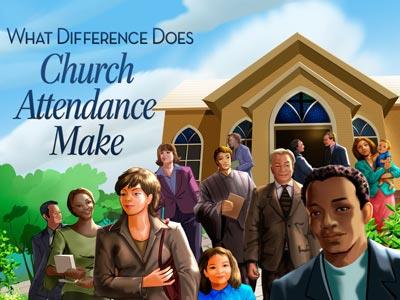-
Dead Church Walking Series
Contributed by Chuck Sligh on Nov 28, 2017 (message contributor)
Summary: A church can be be dead and appear to have life. It can also be almost dead and have all the appearances it is dead, but revived by repenting and getting back to the basics of the Christian life.
Dead Church Walking
Sermon 5 in the Series “You’ve Got Mail”
Chuck Sligh
August 14, 2011
For the PowerPoint for the sermon, write me at chucksligh@hotmail.com.
TEXT: Please turn in your Bibles to Revelation 3.
INTRODUCTION
Illus. – Reader’s Digest had a story about a cat that had been run over by a car. The cat belonged to 4-year-old Billy, and before he could find out about his cat’s death, his mother quickly disposed of the remains.
After a few days though, Billy finally asked about the cat. She kneelt down so she could look Billy in the eye and took his hand and as gently as she could said, “Billy, the cat died.” Then, in an attempt to comfort Billy, his mother said to him, “But it’s all right Billy. He’s up in heaven with God.”
Billy, of course, was devastated, but he had a quizzical look on his face, and after a moment he said, “What in the world would God want with a dead cat?”
The title of today’s message is “Dead Church Walking” because the church at Sardis was a dead church that needed immediate spiritual emergency attention before it was too late. We laugh about the dead cat story, but folks, a dying or a dead church s no laughing matter.
Jesus takes it very seriously.
In verse 1, as in all the messages to the churches, there’s a vision of Jesus that tells us something about what is coming in the message to that particular church. John begins verse 1 saying, “And unto the angel of the church in Sardis write; These things saith he that hath the seven Spirits of God, and the seven stars; I know thy works, that thou hast a name that thou livest, and art dead.”
Who are the seven the seven Spirits of God and the seven stars? Bible scholars agree that the seven stars refer to the pastors of these seven churches.
But who are the seven Spirits of God since we know there is only one Holy Spirit? The explanation that makes the most sense to me is that this is symbolic language to represent the one Holy Spirit who encompasses all seven churches. To a dying church, nothing could be more important than the Spirit of God.
Observe with me five things in Jesus’s message to the church of Sardis in Revelation 3:
I. CONSIDER FIRST THAT WE SEE A PRAISWORTHY PEDIGREE – Verse 1b says, “…I know thy works, that thou hast a name that thou livest.”
As we’ve seen, in Jesus’s messages to these churches so far, He complements each church for their works, and though He usually also had some pointed criticism for them, His recognition of their good points was meant to comfort them.
But Jesus’s complements for Sardis are extremely brief—in fact, the shortest listing so far. There is no real comfort in these words at all like the ones to the other churches. The problem is that they had a name, or we might say today, a REPUTATION that was praiseworthy, but it was all in the past. They still had church services and met and talked about God, but they looked back to the good old days when God USED TO work mightily in their midst. Now all they had was the reputation of a church that lives.
II. SECOND, NOTICE WITH ME A PRECARIOUS PREDICIMENT – At the end of verse 1, Jesus says, “…thou hast a name that thou livest, and ART DEAD.
Jesus says, “I know your works. But wait a minute: they’re all PAST works. You have a pedigree, a history, a testimony of a church that was alive and on fire and going for God. You don’t even realize it yet, but you’re DEAD and unless you’re resuscitated quickly, you’re a goner!”
Jesus clearly says they’re dead at this point, but all is not hopeless at the church of Sardis. Jesus goes on to say in verse 2, “Be watchful, and strengthen the things which remain, that are ready to die….”, so apparently there was still hope.
Illus. – Let me illustrate for you what I mean: Every week paramedics arrive on the scene of accidents where the victims have crossed the barrier between life and death. There’s no heartbeat or breathing; all the vital signs of life are absent.
But the paramedics do not accept this death as final. They may give mouth-to-mouth resuscitation or CPR, or attach a defibrillator, or perhaps inject a drug to stimulate the heart. And for a few frantic moments, nothing happens.
Then the victim begins to cough; takes a few ragged breaths; and the heart begins to beat pulsing life through the body. And instead of sending a corpse to the morgue, a patient is taken to the hospital.

 Sermon Central
Sermon Central



